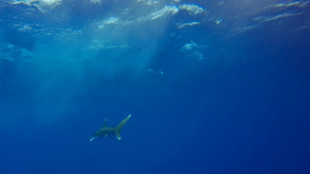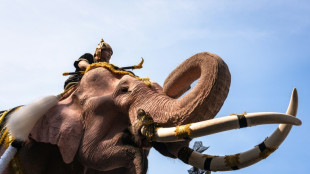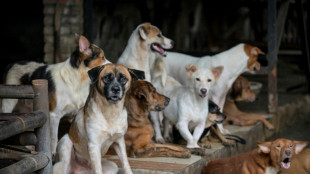

Rare Faberge egg set to smash sales record at London auction
The Winter Egg, one of Faberge's most dazzling creations, is due to be auctioned in London next week and set another sales price record for the legendary jeweller of Imperial Russia.
The egg, commissioned by Tsar Nicholas II in 1913 as an Easter gift to his mother, is expected to fetch at least £20 million ($26 million), according to Christie's auction house.
It is going under the hammer for the first time in more than two decades on Tuesday.
Carved in rock crystal, engraved on the interior with a frost design and sitting on a base made to look like melting ice, it boasts over 4,500 rose-cut diamonds set within platinum snowflake motifs and elsewhere.
"The Winter Egg is truly one of the rarest items that you can find," Margo Oganesian, of Christie's told AFP ahead of Tuesday's sale at its London headquarters.
Faberge created 50 Imperial Easter Eggs for Russia's then-ruling Romanov family over a 31-year period and only 43 are accounted for, Oganesian explained.
"Out of those 43, only seven are left in private hands, so it just shows you how rare and how important The Winter Egg is," she added.
It has twice previously set a world record for a work by Peter Carl Faberge. In 1994, it sold in Geneva for 7.2 million Swiss francs, and then eight years later in New York it set another record of $9.6 million.
Meanwhile, in 2007 Christie's sold the Rothschild Faberge Egg -- not an Imperial creation -- to a Russian collector for $18.5 million.
Oganesian noted that the "technique and craftsmanship" of The Winter Egg set it apart from others like that.
"(It) is just amazing. It's really hard to comprehend how Faberge created it," she said.
The entire piece including its base measures a mere 14.2 centimetres (5.6 inches) in height.
Inside the egg, a surprise awaits: a bouquet of flowers made of white quartz wood anemones, each flower with gold wire stem and stamens.
Like many other Romanov possessions, it shares the upheaval of Russia's tumultuous history over the last century.
Following the overthrow of the Imperial family in 1917 and their execution the following year, it was transferred from Saint Petersburg to Moscow in the 1920s.
As with many other Imperial Eggs, it was sold by the Soviet government to generate foreign currency and was acquired by London jeweller Wartski between 1929 and 1933, according to Christie's.
The Winter Egg was subsequently part of several notable British collections but was considered lost since 1975, the auction house noted in a lengthy essay attached to the sale lot online.
It was then rediscovered in 1994.
The Imperial eggs collection has sparked renewed interest in the art market for decades, particularly among wealthy Russians.
R.Michel--JdB



